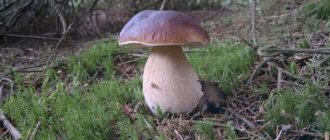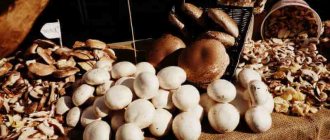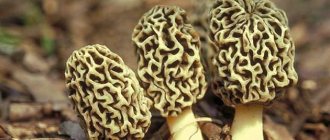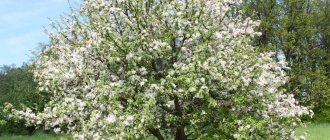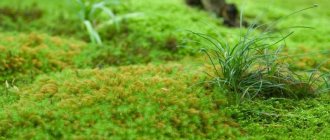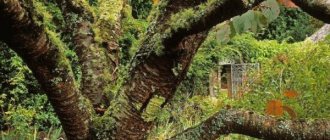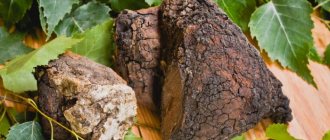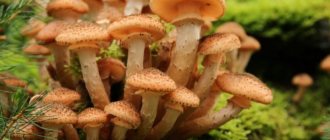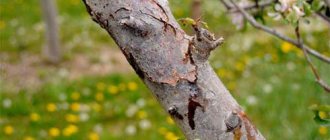Some gardeners always do not pay attention to mushrooms on an apple tree. But in vain. Some of them can not only destroy an individual crop, but the entire garden.
Spores land on wounded, weakened or old plantings.
The reason is not the mushrooms themselves , since they settle mainly on dying tissue. And most don't know how to deal with them.
Before considering the question of when mushrooms appeared on an apple tree and how to deal with them, in this article we will try to analyze the various types of mushrooms that appear on different parts of the apple tree, preventive measures and methods of dealing with them.
What apple tree diseases does this indicate?
Mushrooms in our usual understanding are not just an object with a stem and a cap. There are a huge variety of their types - mold, lichens, moss , etc.
The most common fungal diseases of such a crop as an apple tree are considered to be:
- Scab is a harmful disease caused by the marsupial species Venturiainaequalis;
- Mold (fungal plaque) - the color can be very diverse, depending on the type. For example, powdery mildew, caused by powdery mildew (Erysiphales);
- Rust - damage by rust species;
- Cytosporosis - from the microscopic fungus Cytospora;
- Anthracnose – causative agent Cryptosporiopsismalicorticis (Cordley) Nannf;
- Tubercularia - infection with the Nectria fungus (tubercularia);
- Alternaria blight - caused by a fungus of the Alternaria alternata species;
- Moniliosis – caused by marsupials belonging to the genus Monilinia;
- Milky sheen - spores penetrate damaged parts of the plant;
- Black crayfish is the causative agent of Sphaeropsismalorum Peck, class Deuteromycetes.
lichens and mosses cause harm ? This topic is still not fully studied and controversial. Most experts believe that they are not the main reasons for the death of this culture.
Signs of damage to an apple tree by the tinder fungus
On the territory of one orchard there can be up to two dozen varieties of tinder fungi. The most common ones are:
- Real;
- False;
- Scaly;
- Flat;
- Smoky;
- Yellow;
- Multicolored.
Tinder fungus on an apple tree in spring
Externally, the mushroom may resemble a hoof, a hat, sharp growths, or layers of other shapes located on the trunk and branches of the apple tree. Depending on the variety, tinder fungus can be yellow, orange or gray.
The size of the mushroom varies from 1 cm to 1 m in diameter. On average, it reaches 10-20 cm. For the first couple of years, the body of the fungus may not appear on the surface, and a sign of its presence is a grayish or milky sheen on the leaves.
Why is the tinder fungus dangerous?
The visible part of the parasitic fungus on an apple tree is part of the problem; its root system is deep inside the tree. The tinder fungus affects the entire plant through the vascular system, leading to rotting of the wood and further death of the fruit crop. The presence of a parasite on a tree indicates that the plant is doomed. But the younger and larger the apple tree, the longer it will live.
Section of a tree trunk infected with tinder fungus
If you find tinder fungus at the roots, in the middle and at the top, this indicates that the entire plant is affected. Rot gradually spreads throughout the apple tree, leading to peeling of the bark, tissue necrosis and drying out. This parasite is not influenced by temperature and weather conditions, and an infected tree poses a threat to the entire orchard.
The main cause of damage to an apple tree by tinder fungus is damage to the bark, through which fungal spores enter the tree. Broken branches, cracks in the bark, holes left by birds and insects, sunburn and frost damage can all cause infection.
Classification
Not all of them are harmful to the plant.
There are some mushrooms growing on the apple tree that are in symbiosis with it:
Parasitic
Surely every person has seen fungi on trees, stumps or ordinary dead wood that look like a sponge or resemble a sea shell.
Sponge mushrooms on an apple tree.
Carefully! These are tinder fungi - parasites for our garden and, of course, fruit plants.
There is an opinion that tinder fungi destroy plantings, but this is not entirely the correct conclusion. The bulk of them settle on rotting , old or already dead plants.
But there are those who are not averse to settling on very young trees.
Some of them can remain under the bark for several years and eat the pith and other parts without being detected.
The nature of the lesion depends on the type of parasite . Some of its varieties are quite often found in gardens and homesteads:
- False - produces white core destruction ;
- Plum-red - core and branches ;
- Flat-yellowish-white decay , causing to dry out and become brittle ;
- Real tinder fungus - at the site of rot, usually white or light yellow in color, the core of the wood becomes brittle , stratifies into annual rings;
- Grayish-yellow - rot at the core is brown in color and spreads very quickly through the wood;
- Scaly - forms white rot on the core .
Tinder fungus.
The fungus located on the surface of the wood is not dangerous.
The main danger is in the mycelia, which penetrate deep into the tissues and pose a great danger.
They seem to corrode the wood, forming rot and a hollow, which disrupts the natural physiological process of development. The apple tree weakens and then dies .
Some varieties can destroy a tree in a very short time, while others can suck the juices out of it for decades.
Polypores and the fight against them
You can almost always save a fruit tree if you correctly determine the type and characteristics of the tinder fungus.
Beware of underestimating the consequences it can cause.
The main thing is not to immediately rush into panic and destroy culture.
Usually, up to five years pass from the appearance of the first fungal attacks to a noticeable decrease in yield , so there is time to save the planting from death.
As a last resort, leave such a tree as it is and fight the disease, at the same time plant a new one so that it grows and begins to produce a harvest, becoming, as it were, a replacement for the sick one.
If after annual prevention the fungus appears again , then it is necessary to cut them off and burn .
Advice! Fungal spores are released from the beginning of August , so the procedure for removing them must be carried out before this month.
If there is such a mushroom on an apple tree, what should you do?
Treat cut areas with copper sulfate and garden pitch .
Coat the stamps with casein glue and the addition of karbofos. This will prevent their further occurrence.
Symbiosis with apple tree
There is a friendship between fungal organisms and plants or the so-called symbiosis (mycorrhiza).
This connection between them is very important for both of them.
Entoloma garden apparently enters into symbiosis, since it can often be found under it.
But the relationship has not been fully studied, so it is difficult to say affirmatively about symbiosis in general.
Types of fungus on trees
The surrounding space at the dacha is literally saturated with fungal spores. They can remain in the soil for many years and become active at favorable temperatures and humidity. The main sign of fungal infection is open wounds on the trunks. If they appear, disinfection must be carried out urgently.
Related article:
Pharmacy products that can be used to protect your garden
There are many varieties of fungi that attack fruit crops. The most common include:
- Sooty fungus. The pathogen forms a dark coating on branches, leaves, and fruits. It feeds on sugars from tree sap and secretions of small insects, such as aphids. Fruits with black spots are poorly stored and rot quickly, although the fungus does not affect the inside of the pulp.
- Powdery mildew. A dangerous disease that can cause the entire crop to be lost. A white powder-like coating forms on the leaves and branches. Gradually it turns yellow, hardens and dries, preventing the formation of ovaries.
- Scab. The disease most often affects apple trees. At first it goes unnoticed, forming yellowish and brownish spots on the trunk and the back of the leaves. Then the pathogen spreads to the fruit, and red spots form on the skin.
- Moss-lichens. Scientists are still debating how harmful these plants are to fruit trees. They themselves do not pose a danger, since they do not have roots and do not drink juice from garden crops. But they live in symbiosis with single-celled plant microorganisms that can feed harmful fungi. Lichens can be recognized by their silver-gray or greenish coating in the form of scales.
- Red fungus. Cytosporosis is another dangerous disease that affects fruit crops. It appears as reddish-brown spots on the bark. Gradually, shields and plates form on it. If you look closely, you can see thin threads of fungus.
- Black cancer. One of the worst diseases. It is almost impossible to cure a tree, and after 3-4 years it dies. Only radical measures will help save the garden from extinction.
Related article:
Beet diseases
For each of the listed diseases, there are different methods for dealing with mold on wood. But there are also general prevention methods that help protect against the spread of the fungus.
Important! How to cure monilial burn of fruit trees
Common fungal infections
Finding out the reason why mushrooms grow on an apple tree , establishing the correct diagnosis and starting treatment at the very beginning of its formation is already half the success.
Let us dwell on the most dangerous and common fungal infections that form on stem areas .
Black cancer
It manifests itself as yellowish-brown or black spots on the bark.
When starting treatment, it is necessary to determine the cause of the blackening of the trunk .
The causative agent of the disease is characterized by rapid reproduction and spread of the disease throughout the entire trunk, including second-order branches.
First, spots appear , which then dry out, leaving behind damaged bark , which disrupts the movement of sap and, accordingly, the tree dies.
Mostly this disease occurs in old plantings, to which, for some reason, less attention is always paid to care and prevention.
Black cancer on an apple tree.
How successful the treatment will be depends on the extent of its spread and the focus.
As soon as the first spots appear, you need to immediately take measures to eliminate them, which is guaranteed to help cure the culture:
- Clean damaged areas with a wire brush.
- Treat stains with copper sulfate or Bordeaux mixture.
It is best to carry out such a treatment event annually , regardless of the presence of the disease.
black cancer has become widespread in gardens , when the trunk completely turns black.
It is very difficult to deal with such a problem, and if not treated in a timely manner, it is impossible. Therefore, timely treatment and prevention .
Important! After each treatment of damaged areas, they must be lubricated with garden varnish .
Cytosporosis
Some symptoms resemble bark cancer.
The color of the bark does not change, but blisters , which, when pressed, separate from the trunk.
In these dying areas, black mounds , in which foci of rotting are localized.
The cause of this disease is a microscopic fungus , which mainly appears on damaged areas of the trunk, cracks or areas caused by thermal sunburn. It begins to release toxins that poison the bark, which spreads the infection to the entire tree.
Treatment of such a disease comes down to spraying in the spring until the buds of the entire crown of the trunk swell with the drug “Hom” according to the instructions indicated on the package.
Before flowering begins, treatment with copper-containing preparations (copper sulfate). And the final treatment immediately after flowering with Hom.
Be sure to whiten the trunks and skeletal branches before the start of winter, repeating this procedure with the beginning of spring.
Green coating
Many gardeners have more than once noticed the appearance of such plaque on trunks. He does not pose a serious danger. lichens begin to form .
Processing the tree trunks of apple trees.
They are easy to clean with a brush and do not cause any concern. Their appearance usually occurs from the north side, or in humid weather conditions.
To prevent this from happening, it is necessary to treat the trunk with copper sulfate in the fall, and in the spring, whitewash or paint the trunks with special paint.
To guarantee results, you can add a small amount of copper sulfate to the whitewash solution .
Sooty fungus: causes of appearance, methods of control, prevention
In the process of growing garden and vegetable crops, the gardener annually encounters some diseases that negatively affect the final harvest. Among all the variety, sooty fungus is also found. What it is? Methods of control and prevention are presented below.
What is the danger?
Sooty fungus on cucumbers or other fruits and vegetables is not dangerous in itself, but it clogs the pores of the leaves, thereby disrupting the respiration process, as a result of which the plant develops a lack of oxygen. The fungus also negatively affects the plant’s immunity, which in turn contributes to its death. If the infection problem is not resolved in a timely manner, you may soon lose the plant.
Development of the disease
Fungal disease appears and develops quite quickly. Sooty deposits can be detected just a few weeks after the plant has been infected by parasites.
In urban plantings, blackworm develops almost immediately after the leaves bloom in the spring.
Sooty fungus on tomatoes and other cultivated plants develops quickly at high ambient temperatures, the peak of its activity occurs in the hottest summer months - July and August.
Since the plant's metabolism, respiration and photosynthesis are disrupted due to damage, it soon dries out and dies, especially for annual crops.
The following methods of combating sooty fungus are used in gardening:
- Removing affected leaves. The procedure is effective in the early stages of the disease, when there are not many affected areas. After removal, they must be burned away from garden crops to prevent the spread of the disease to healthy plants.
- Spraying with Bordeaux mixture at a concentration of 1%. For this, ordinary sprayers can be used if the treatment area is small, and garden sprayers, which are characterized by high productivity.
- Spraying with a 1% solution of copper sulfate also delays and stops the development of sooty fungus on plants.
- It is impossible to cure the affected plant without destroying the pests that caused the sooty fungus to appear. For this, drugs such as “Calypso”, “Fitover”, “Fitosporin” are used.
- Spraying with a copper-soap mixture. To prepare it you will need 5 g of copper sulfate, 150 g of finely grated laundry soap 72%, 10 liters of water. Everything must be mixed until the vitriol and soap are completely dissolved, then treat the plants with a spray bottle.
- To destroy fungi in the soil, it is recommended to water the soil around the plant with hot water and then cover it with film. Using this method, you must be extremely careful, because you can easily damage the roots and trunk of the plant with hot water.
- Spraying with a solution of soda and 72% laundry soap is allowed.
Timely treatment can save garden plants from inevitable death.
Prevention measures
In order not to have to carry out treatment for sooty fungus, it is necessary to engage in disease prevention. The following measures apply for this:
- Preventive spraying of plants with “Fitosporin”, “Calypso” and other antifungal drugs. It is usually carried out in the spring, when the first leaves bloom, and also in mid-summer, when the chances of being affected by the fungus are highest.
- To prevent the spread of the disease, it is necessary to promptly pick off infected leaves and burn them away from fruit and vegetable crops.
- In the fall, before planting, you can treat the soil and garden tools with a solution of copper sulfate.
- It is recommended to change the growing location of different crops annually; this has a positive effect not only on subsequent yields, but also reduces the risk of many diseases, including sooty fungus.
- To prevent the development of fungal diseases, it is important to prevent waterlogging of the soil, as well as to thin out too thick tree crowns.
Sooty fungus affects not only garden plants, but also indoor plants, so when buying a new flowerpot, you need to quarantine it for two weeks in another room. This is necessary in case the plant is affected by diseases that can be transmitted to healthy flowers.
Frequent inspection of the condition of plants also prevents the development of many diseases, including fungal ones. This helps to identify the problem in a timely manner and solve it at the initial stage of development.
In the garden, it is necessary to carefully remove weeds that grow between the beds, as they can cause pests.
For small areas of soot infestation, it is sometimes sufficient to remove blackened leaves or simply wash off the soot.
Variety selection
In order to avoid having to take emergency measures to combat sooty fungus, it is recommended to pay attention to crop varieties that are resistant to fungal diseases:
- Pears: “early ripening from Michurinsk”, “allegro”, “morning freshness”, “gera”, “Yakovlevskaya”.
- Cherries: “chocolate girl”, “Turgenevka”, “minx”, “short story”, “toy”.
- Apple trees: “cypress”, “lungwort”, “aphrodite”, “sun”, “Antonovka”.
- Tomatoes: “resonance”, “gnome”, “Perseus”, “orange miracle”, “Tatyana”.
- Peaches: “Vulcan T-1”, “Harbinger”, “Royal Glory”, “Sweet Ring”, “Fidelia”.
- Grapes: “Victoria”, “White Delight”, “Arcadia”, “Laura”, “Cardinal”.
- Strawberry: “torpedo”, “Queen Elizabeth II”, “honet”, “Tsarskoye Selo”.
- Potatoes: “bronitsky”, “alena”, “snow white”, “redus”, “temp”.
- Black currant: “Gulliver”, “lazy”, “Dashkovskaya”, “centaur”, “mila”.
- Red currant: “Asya”, “Valentinovka”, “pink muscat”, “memorable”, “cascade”, “generous”.
- Gooseberry: “non-slukhovsky”, “malachite”, “spring”, “isabella”, “Russian red”, “Russian yellow”, “Cossack”.
- Cucumbers: “competitor”, “delicacy”, “Nezhinsky”, “son of the regiment”, “whim”, “bunny”, “tanechka”.
If you purchase varieties of fruit and vegetable crops that are resistant to fungal diseases, you can prevent the development of sooty fungus on plants.
Conclusion
Sooty fungus is a rather dangerous disease for plants, as it significantly impedes their normal functioning. Despite the fact that control measures are quite simple, it can be difficult to cure a plant due to the fact that fungal diseases spread very quickly.
Source: https://FB.ru/article/408577/sajistyiy-gribok-prichinyi-poyavleniya-metodyi-borbyi-profilaktika
Features of autumn processing
You can try as much as you like to treat your plantings from pests during the summer, but if your neighbors do not pay attention to their garden, then there is a high probability that pests will move in with you when the weather warms up.
Therefore, with the onset of autumn and the end of leaf fall, it is imperative to treat your apple trees:
- First of all, you need to clean the bark with a soft brush to remove everything unnecessary.
- Collect all the foliage and fallen fruits .
- Try to remove the remaining leaves from the branches.
- Don't forget to burn .
Required work:
- Treatment of the area along the width of the crown with fungicidal preparations;
- Digging or loosening the area of the tree trunk circle;
- Adding wood ash to digging areas. This will serve as excellent nutrition in the spring, which will increase the immunity of plants.
Advice! Fungicides such as Bordeaux mixture or copper sulfate will destroy many fungal spores, which will protect fruit plants and make work easier in the spring.
Prevention measures
To avoid crop loss or even plant death, you must not forget about preventive measures to prevent infection:
Apple tree processing.
- Monitor the condition of the bark and protect it from all kinds of damage;
- Remove and trim dry and damaged branches;
- Do not wait for parasites , but carry out timely prevention against them;
- Whiten the trunk in a timely manner from sunlight and frost damage;
- If wounds occur, promptly coat them with garden varnish or other special preparations;
- Cuts and sections must be treated with copper sulfate followed by putty ;
- Cut off the mushrooms that have formed from the tree before they spread the spores;
- Fill emerging hollows;
- In the fall , collect all the leaf fall around the crown and burn it.
When fighting for the harvest, the most dangerous opponents are pests and diseases .
This is especially true for parasites, which are the only carriers of fungal diseases .
Therefore, prevention is important to save the apple orchard.
Why the following types of mushrooms grew on apple trees and what to do with them
The appearance of various fungal manifestations on an apple tree requires urgent measures to determine the cause of the occurrence and eliminate them.
Chaga, woody, yellow, white, green, dry
The bulk of mushroom-shaped growths on apple trees are varieties of polypores , which are parasites.
It is necessary to start fighting them as quickly as possible, before it sucks all the juices from the trees.
Basidial
These are higher fungal organisms. Sporulation organs - basidia .
In some types, basidia develop openly, without forming fruiting bodies (rust).
They can cause a disease in crops such as rust .
Prevention comes down to spraying with preparations or planting varieties that are resistant to rust disease.
See what a fairly safe mushroom looks like on an apple tree, photo of a lichen:
Lichen.
Lichen
A group of lower plants connected by symbiosis. It does not pose a great danger if the quantity is small, but it is better to remove them with a soft brush to avoid the accumulation of pests under it.
Oyster mushrooms
Of the seven varieties of oyster mushroom, five are considered edible .
The oyster plant , which can appear on fruit trees in gardens, is also edible How does it affect cultural plantings?
After all, this is a wood-destroying formation . Observations from gardeners indicate that there are no concerns.
Oyster mushroom does not destroy living trees.
Even if it appears on old plantings, its mycelium feeds on wood that is already infected with tinder fungi.
Attention! oyster mushroom does not grow , then other parasites will appear in its place, which can destroy the crop.
Features of struggle in different parts of the apple tree
Root
Usually the root is not susceptible to fungal diseases. It affects its bacteria, causing a dangerous disease - root cancer .
Trunk and bark
The main task is complete cleaning of contamination, treatment with copper-containing preparations and protective disinfectant putty.
How to fight fungus in a hollow tree
Hollow in the trunk of an apple tree.
If a large hollow , then experts advise carefully cleaning it with sandpaper, filling it with crushed stone and covering it with cement mortar . Small hollows can be covered with garden varnish.
Apple tree diseases.
The following types of fungal diseases are typical for apple trees:
- Scab is a harmful disease.
- Mold. May vary in color, depending on whether it belongs to a particular species.
- Rust. The defeat occurs with the help of rust species.
- Cytosporosis. The causative agent is a microscopic fungus called cytospores.
- Anthracnose.
- Tuberculation. The causative agent is the fungus Nectria.
- Alternaria, moniliosis.
- Milky shine is characterized by penetration into the affected areas of the tree.
- Black cancer.
As for lichens and mosses, how harmful they are has been a topic of debate among many scientists for many years. But most experts believe that their presence cannot lead to the death of the tree.
